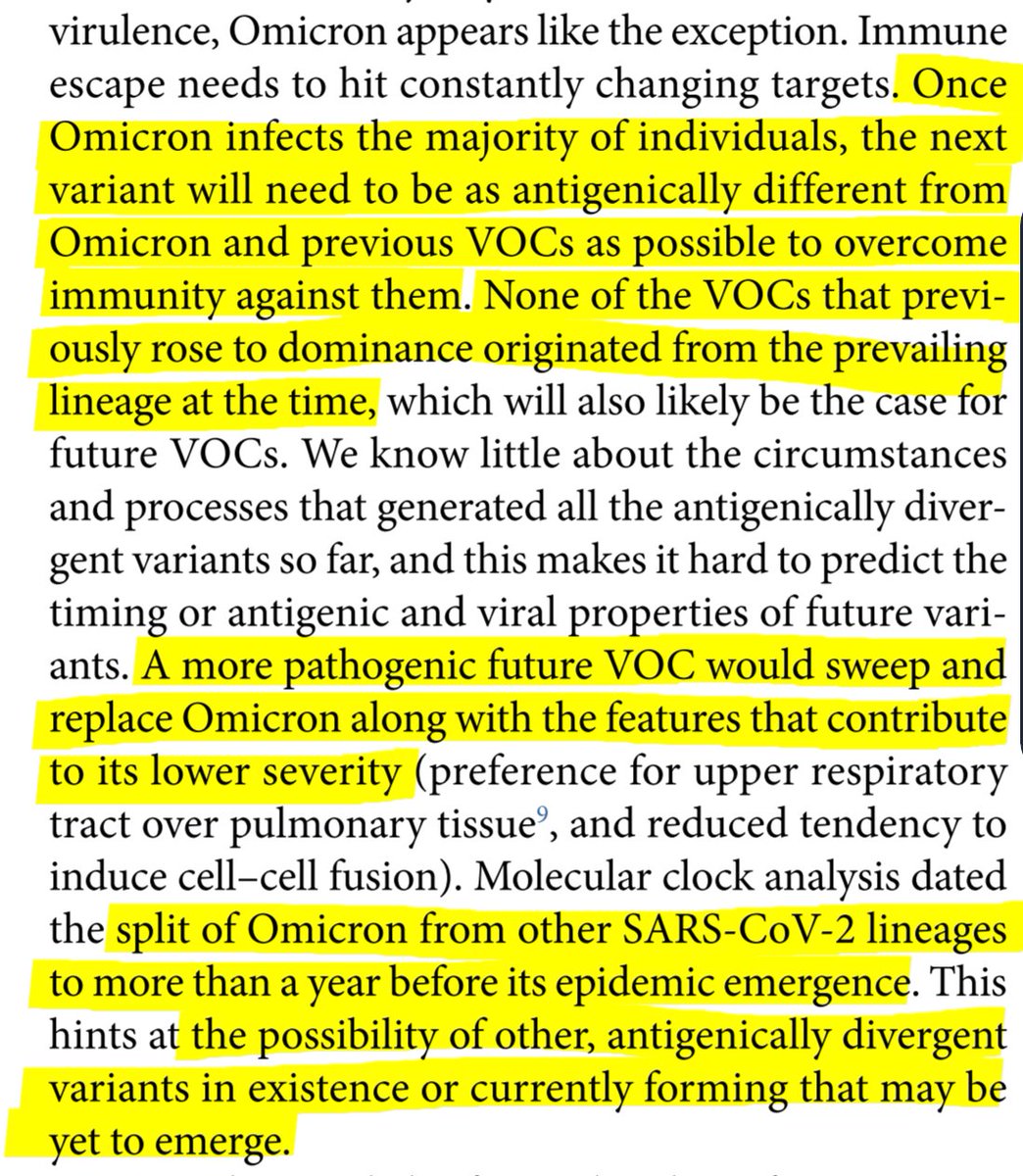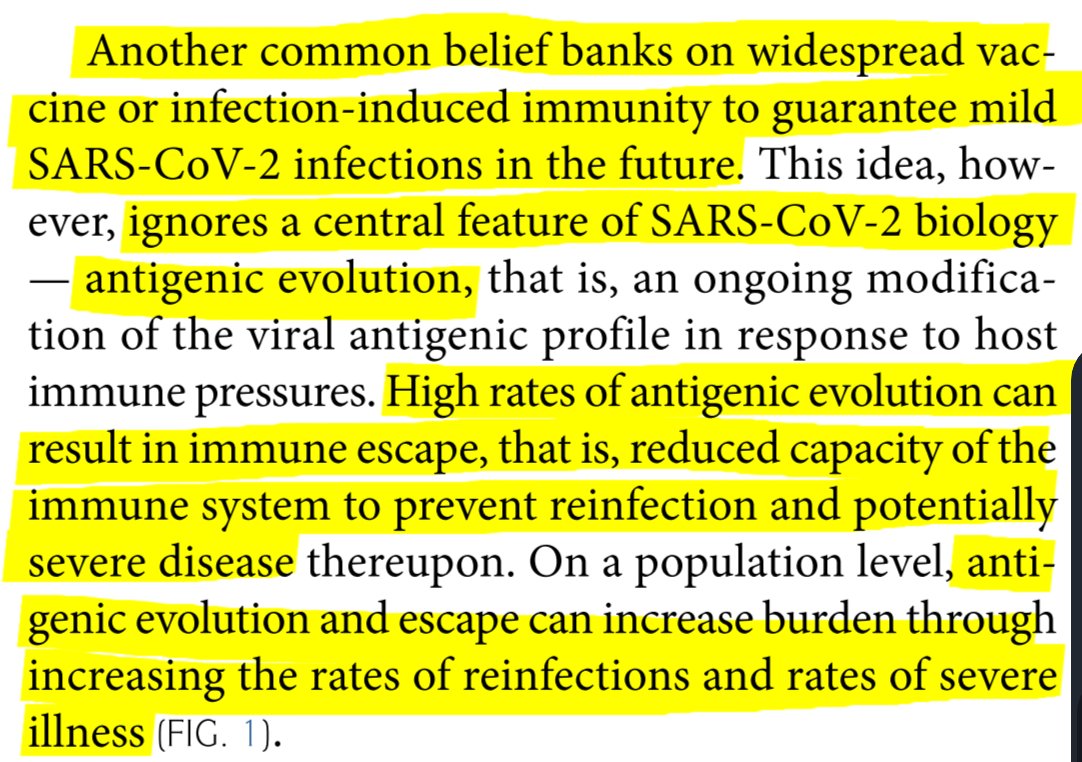THREAD: @ArisKatzourakis wrote a brilliant @Nature commentary busting some popular - and unfortunately sticky - myths about the evolution of Covid and what this means for the pandemic.
I'll summarise its main points here but TLDR it's not over. 1/7
I'll summarise its main points here but TLDR it's not over. 1/7
https://twitter.com/ArisKatzourakis/status/1503363580963573762

2. Viruses do NOT evolve to be less virulent. They evolve to spread more efficiently - sometimes this means they end up more virulent (e.g. higher viral load), sometimes less. 3/7 

3. That Omicron is milder is an accident and says nothing about the next variant. Indeed, Omicron probably emerged a year before it spread and so next dominant variant might be more like previous (more virulent) variants... 4/7 







4. Immunity from previous infection is not a panacea - previous variants (Alpha, Delta) could dominate through increased transmissibilty - now variants need lots of immune escape (like Omicron). Evolution will drive us towards *more* immune escape - inc from vaccine immunity. 5/7 



If anything, current high levels of immunity *and* high levels of infection will accelarate evolution to more immunity resistant variants.
There is *plenty* of evolutionary space left for Covid to explore... 6/7

There is *plenty* of evolutionary space left for Covid to explore... 6/7


So what does this mean? It means not being complacent, not declaring that it's over, not dismantling our brilliant surveillance programmes and actually doing something positive to prepare for the next wave - and the ones after that. 7/7
article here: nature.com/articles/s4157…
article here: nature.com/articles/s4157…
• • •
Missing some Tweet in this thread? You can try to
force a refresh
























